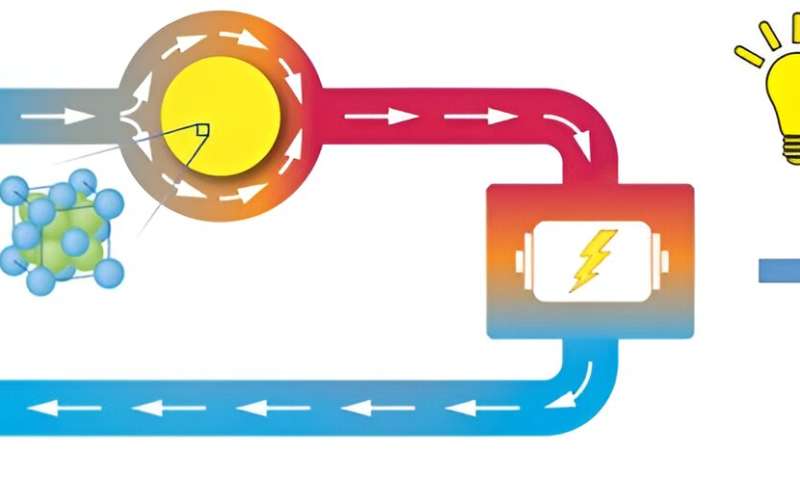TETI 2.0: Understanding nuclear fuel behavior at the atomic level

Transporting heat is an essential part of our daily life—from boiling a pot of water to creating complex carbon-free energy technologies that power our cellphones, laptops and home appliances.
Nuclear energy, an example of heat transfer, has a proven track record spanning over 70 years. It currently provides approximately 20% of the total electric energy generation in the United States. A nuclear reactor is similar in principle to a fossil energy plant in that thermal energy, (or heat) is used to generate steam, which is then converted to electricity using a steam turbine.
As the industry moves to advanced fuel cycle technologies, efficiently transporting heat energy becomes increasingly important. Meeting this challenge requires understanding the microscopic mechanisms that control the transport of heat.
In typical nuclear fuel, a uranium atom absorbs a neutron, becomes unstable and splits, creating at least two new lighter atoms. This process imparts sufficient kinetic energy to these new atoms to displace thousands of adjacent atoms from their equilibrium positions, causing microscopic defects in the crystalline structure.
Furthermore, this process produces heat that must flow through the fuel element, then be transferred out to the coolant, and finally produces steam for making electricity. The crystalline defects degrade the ability to transfer heat—a quality known as its thermal conductivity.
"Over the lifetime of the fuel in a reactor, its thermal conductivity decreases by as much as 70%," said David Hurley, an Idaho National Laboratory Fellow and director of the Center for Thermal Energy Transport under Irradiation (TETI), an INL-led Energy Frontier Research Center supported by the Department of Energy's Office of Science.
The degradation of a nuclear fuel's thermal conductivity is a challenge for efficient nuclear energy operations, but researchers are learning that this degradation can be mitigated by designing the chemistry and structure of the fuel. Fully realizing these mitigation strategies requires going beyond trial-and-error investigative approaches.
This is where TETI comes into play. The center's mission is to accurately predict and ultimately improve the transport of thermal energy in nuclear fuels in extreme radiation and temperature environments. "Because our materials of interest contain uranium, quantum mechanical approximations such as density function approximations all fail at some level," said Hurley. "What sets TETI apart is its ability to tackle this problem while staying as close to the first principles of quantum mechanics as possible."
During its first four years, TETI scientists used inelastic neutron scattering to gain critical new insight into resolving the atomic scale mechanisms governing thermal transport in defect free, ceramic nuclear fuels. TETI scientist also applied beyond density functional approximations to discover a new energy state of uranium oxide, lower than previously reported. "The lowest energy state is the correct state, and we are getting very close," said Linu Malakkal, one of the principal investigators on the TETI team.
"As we look to the future," Hurley said, "it is important to realize that the tools developed by TETI researchers will not only impact advanced nuclear energy concepts but will offer opportunities for other energy-related technologies beyond nuclear energy, such as thermoelectric or photoelectric energy conversion, and/or new quantum materials."
Provided by Idaho National Laboratory